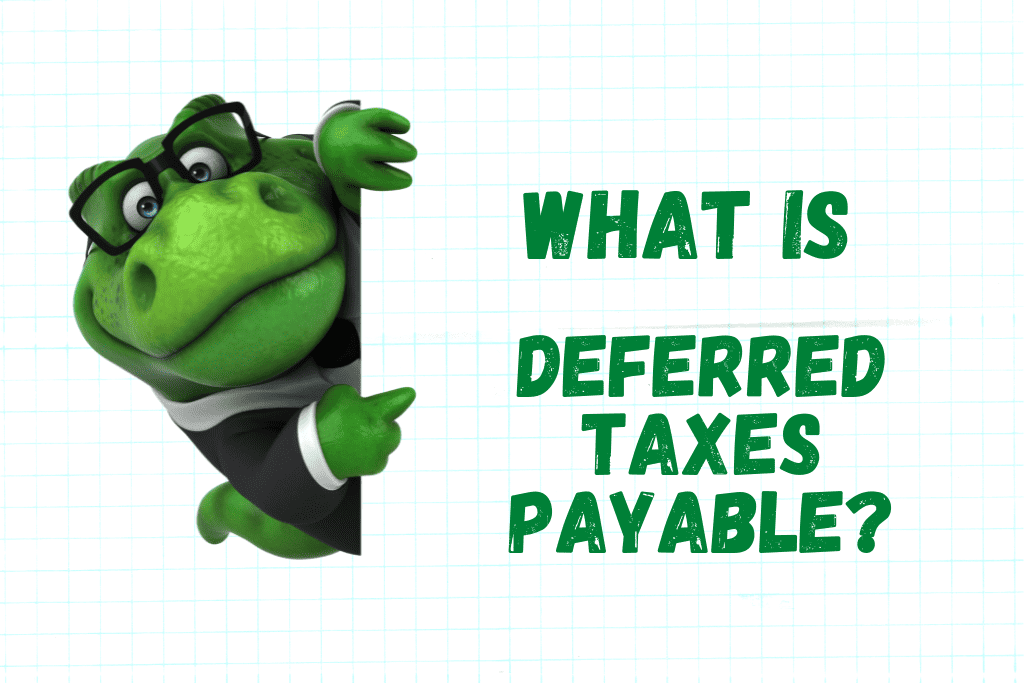Deferred taxes payable refers to the amount of income tax that a company has temporarily deferred and is obligated to pay in the future. It represents the future tax liability that arises due to differences between the accounting methods used to calculate taxable income and the methods used to determine income for financial reporting purposes.
When a company prepares its financial statements, it follows accounting principles that may differ from the tax rules and regulations set by the government. These differences can lead to variations in the timing and amount of taxable income reported for financial statement purposes versus taxable income reported for tax purposes.
Deferred taxes payable arise when taxable income is lower for financial reporting purposes than for tax purposes. This results in a temporary deferral of taxes that will be payable in the future when the differences reverse.
For example, let’s say a company has an expense that is deducted for tax purposes immediately but is amortized over several years for financial reporting purposes. This creates a difference between the taxable income reported on the tax return and the income reported on the financial statements. The company will have a deferred tax liability, representing the future taxes it will owe when the expense is deducted for financial reporting purposes.
Example
Let’s consider a fictional company called XYZ Inc. that operates in a jurisdiction with a corporate tax rate of 20%.
XYZ Inc. has a piece of machinery that it purchased for $100,000. For financial reporting purposes, the company depreciates the machinery over a useful life of five years, resulting in an annual depreciation expense of $20,000. However, for tax purposes, the tax authority allows XYZ Inc. to use an accelerated depreciation method that allows for a larger deduction of $30,000 per year.
In the first year, XYZ Inc. will report a lower taxable income for financial reporting purposes ($80,000) compared to its taxable income for tax purposes ($70,000). This is because the higher depreciation expense of $30,000 is deducted on the tax return but only $20,000 is deducted for financial reporting.
As a result, XYZ Inc. will have a deferred tax liability for the difference between the tax and financial reporting income. The deferred taxes payable will be calculated by multiplying the temporary difference ($10,000) by the applicable tax rate (20%), resulting in a liability of $2,000.
On XYZ Inc.’s balance sheet, the deferred taxes payable of $2,000 will be recorded as a liability. It represents the estimated future tax obligation that XYZ Inc. will have to pay when the temporary difference reverses, such as when the machinery is fully depreciated or sold.
Over time, as the temporary difference reverses or tax laws change, XYZ Inc. would reassess and adjust its deferred taxes payable accordingly to reflect any changes in the future tax liability.
Please note that this is a simplified example, and in practice, there may be additional complexities and factors involved in calculating deferred taxes payable for a company.
Deferred taxes payable are recorded as a liability on the company’s balance sheet. The amount represents the estimated future tax obligation that the company will have to settle with the tax authorities.
It’s important to note that deferred taxes payable can change over time due to various factors, such as changes in tax laws or revisions to estimates of future taxable income. Companies are required to regularly reassess and adjust their deferred tax liabilities to reflect these changes.
In summary, deferred taxes payable represents the future tax liability that a company has temporarily deferred due to differences between taxable income for financial reporting purposes and tax purposes. It is recorded as a liability on the balance sheet and is subject to periodic adjustments.

